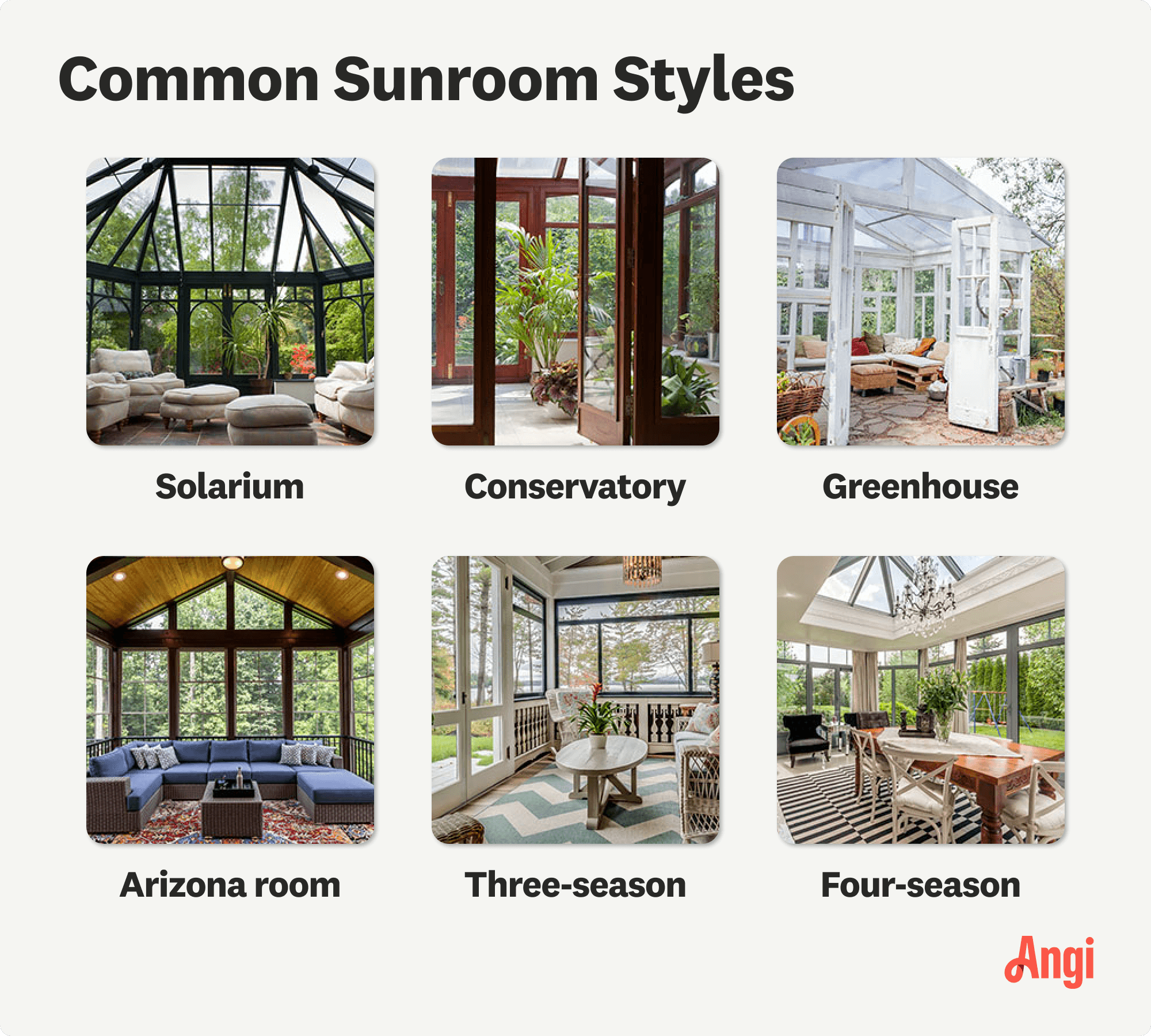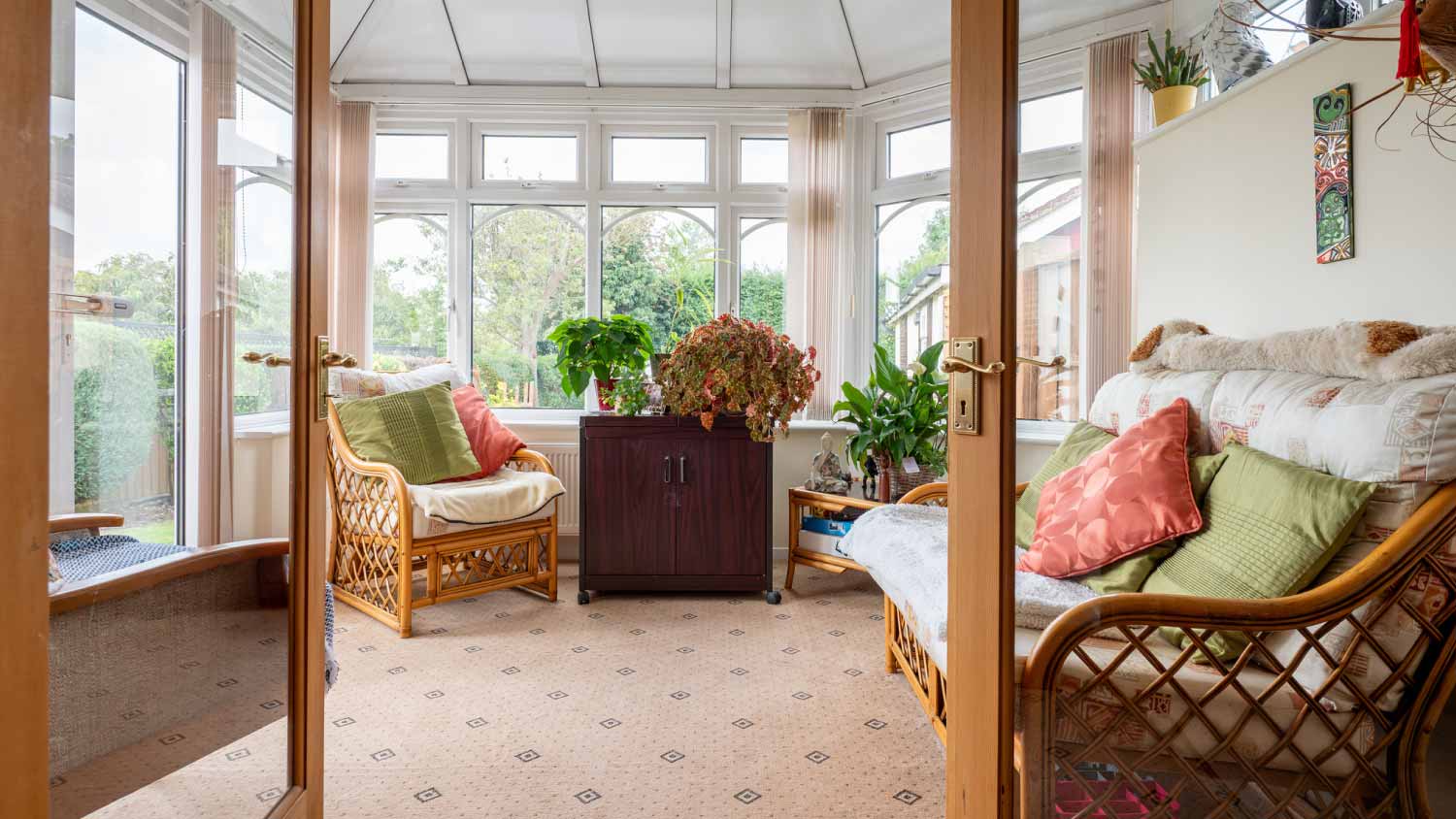
Homeowners can enclose their porches in a few different ways—each having their own price tag. Learn what contributes to the total cost to enclose a porch and how you can reduce the bill.
Keep on the sunny side of building codes by securing a permit for this project


Building a sunroom is a construction project that requires a permit.
Obtaining a permit ensures your sunroom is built safely and meets all local building codes.
Failure to obtain a permit can result in fees, fines, or a teardown of the construction.
Permit processes vary by location—consult your local building authority to confirm what you need.
Adding a sunroom addition to your home is a great way to enjoy lots of natural light and bask in the benefits of the outdoors without any of the nuisances that come with it, like bugs and yard debris. Before beginning construction on your sunroom project, it’s important to know whether or not you need to obtain a permit and what can happen if you don’t.

A sunroom is a room with abundant natural light provided by walls made of glass windows, mesh screens, or a combination of the two. Sunrooms may have low partial walls in addition to windows or mesh, and are often attached to the side or rear exterior of the house and accessible from inside. There’s a wide variety of types of sunrooms, ranging from screened-in Florida rooms to all-glass solariums.

You will need to obtain a building permit before building a sunroom. A sunroom is a major construction project involving a foundation, roof, windows, and many other components that are regulated by building codes. A permit ensures all work is performed legally and according to local regulations, and that your local building authority has signed off on the project.
Permits can actually be quite expensive. Talk to your contractors before starting your project to understand how much the required permits will cost you.
Hiring a contractor who builds sunrooms and is familiar with the local permit process and regulations will ensure your project proceeds smoothly, and you won’t run into any of the consequences for not obtaining the correct permits.
The cost of a sunroom can be a major investment, but failing to obtain a permit can cost you much more in fees or fines. In some cases, you may even be required to tear down the unpermitted work. A sunroom constructed without the proper permits can also lead to problems with your homeowners insurance coverage and can make it difficult when it comes time to sell your home.
Obtaining a permit may be inconvenient, but it’s a critical step for any construction project. As the homeowner, you’re responsible for confirming that the right permits have been pulled, but check with your local building authority to confirm whether you or your local sunroom contractor should be the one to apply.
The permit application process varies by location, so before getting started, confirm what information and documentation you’ll need to provide. In most cases, you’ll need to provide a permit application fee and detailed design plans drawn up by a licensed professional that include sunroom size and other construction specifics. The building authority will review your plans and either approve them or let you know what alterations need to be made.
During and after construction, local officials will inspect your project to ensure it meets all codes and regulations. Once the project is complete, they’ll sign off on an approval, indicating that your sunroom addition is legal, compliant, and structurally sound.
Raven and crew does absolutely fantastic job. They are very professional if any concerns were to occur with any of her work she always took responsibility and finished out with a great job. I have worked with her business for a year and have always been satisfied. Very trusted business and...
Very professional and efficient with work. Answered each question I had with great knowledge and an informative response. Will be working with them again.
Window Depot did an amazing job on my deck. I wasnt sure what I wanted to do, but their composite decking was affordable and will last a long time. I am excited to have family over, and I am no longer embarrassed by my backyard. Jeff and the ground crew were polite, respectful, and caring for...
We used Unique Hardwood Floor LLC three years ago to work on the floors of a 70 year old home that needed a great deal of work. Some floors needed repairs, some were replaced and others just needed to be refinished. It was a complicated job as they needed to blend the old and the new to...
They did a great job and were easy to work with. They thinned the trees out while leaving a pleasing shape and setting them up for the next several years. They cleaned everything up and couldn't have been nicer.
I've been around the block myself many times and know most of the lingo, angles, tricks and traps of contracting work on a home. And, I've taken the community school contracting licensing classes and heard contractors discuss openly and candidly trade practices and tales both good and bad. ...
From average costs to expert advice, get all the answers you need to get your job done.

Homeowners can enclose their porches in a few different ways—each having their own price tag. Learn what contributes to the total cost to enclose a porch and how you can reduce the bill.

Love soaking up sun but can’t stand the bugs? Learn how much a Florida room addition costs and what factors influence the price to get the best of both worlds.

Use our expert guide to figure out how much it costs to install a pool enclosure. Establish your budget, then plan your pool enclosure project.

Learn how to build a four-season room on a deck with this step-by-step guide. It’s all about planning, good foundations, and help from the right contractors.

Weighing the options between a 3-season versus 4-season sunroom? Learn the pros, cons, and costs to decide how to brighten your home's living space.

A gazebo on decking can be a charming addition to an outdoor space, but not all decks can bear the weight. Here’s what you need to know about installing one.